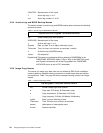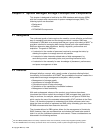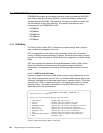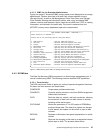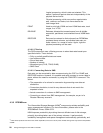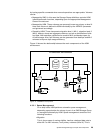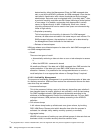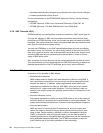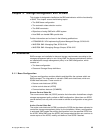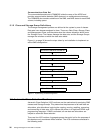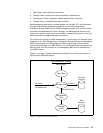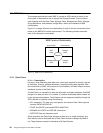
32 Storage Management with DB2 for OS/390
• Simulate potential policy changes and understand the costs of those changes.
• Produce presentation quality charts.
For more information on the DFSMS/MVS Optimizer Feature, see the following
publications:
• DFSMS Optimizer V1R2 User's Guide and Reference, SC26-7047-04
• DFSMS Optimizer: The New HSM Monitor/Tuner, SG24-5248
4.3.6 SMF Records 42(6)
DFSMS statistics and configuration records are recorded in SMF record type 42.
The type 42, subtype 6, SMF record provides information about data set level
performance. DFSMS must be active, but the data set does not need to be SMS
managed. Two events cause this record to be generated: data set close time and
each type 30 interval record being written.
You can use DFSMSopt or any SMF specialized package to format and display
this useful record. For instance, you can start by looking at the list of the first 20
data sets in terms of activity rate at the specified interval and verify that the most
accessed DB2 data sets are performing as expected both in terms of I/O and
usage of DB2 buffer pools.
Also, accesses to critical data sets can be tracked periodically by data set name.
Their performance can be mapped against the DB2 PM accounting to determine
detailed characteristics of the I/O executed, and to verify cache utilization.
4.4 Benefits
A summary of the benefits of SMS follows:
• Simplified data allocation
SMS enables users to simplify their data allocations. Without using SMS, a
user would have to specify the unit and volume on which the system should
allocate the data set. In addition, space requirements would need to be
calculated and coded for the data set. With SMS, users can let the system
select the unit, volume and space allocation. The user therefore, does not
need to know anything about the physical characteristics of the devices in the
installation.
• Improved allocation control
Free space requirements can be set using SMS across a set of disk volumes.
Sufficient levels of free space can be guaranteed to avoid space abends. The
system automatically places data on a volume containing adequate freespace.
• Improved performance
SMS can assist in improving disk I/O performance, and at the same time
reduce the need for manual tuning by defining performance goals for each
class of data. Cache statistics, recorded in system management facilities
(SMF) in conjunction with the Optimizer feature, can be used to assist in
evaluating performance. Sequential data set performance can be improved by
using extended sequential data sets. The DFSMS environment makes the
most effective use of the caching abilities of disk technology.



